Rackmount UPS (Uninterruptible Power Supply) systems keep critical applications running and the power supply uninterrupted. These systems protect power in harsh settings like data centers, telecom, and industrial operations, where downtime can be very disruptive and losses incurred considerable. In this guide, we will review advantages and considerations alongside key features of rackmount UPS systems so that you can make tailored decisions that suit your needs. This guide will be your primary resource to improve system uptime, safeguard sensitive equipment, or refine your power management.
What is a Rack Mount UPS and How Does it Work?
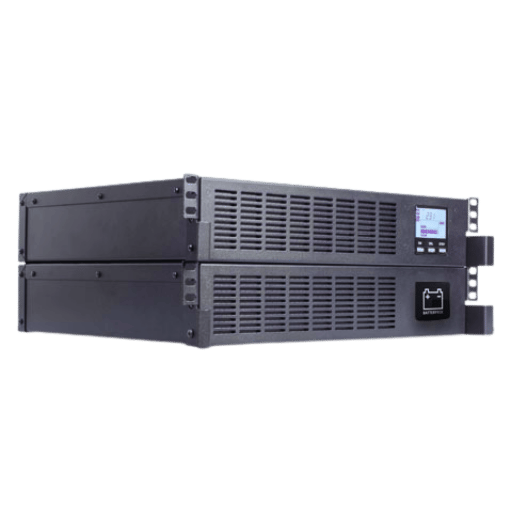
A rackmount UPS or Uninterruptible Power Supply is a voltage control and power backup device that fits into a standard server rack. This UPS protects equipment from power interruptions by continually supplying electricity. UPS systems instantly switch to battery power when needed, and charged batteries provide seamless operational power until regular electricity supply resumes. UPS systems regulate and filter electricity, preventing equipment damage from sudden energy loss and power fluctuations. Because of these features, a rackmount UPS system is most suitable for IT and data center environments and other critical applications that need uninterrupted power.
Understanding Rack Mount Components
Rackmount components are types of hardware that fit into a rack enclosure, which is primarily used for IT infrastructure that houses servers, storage devices, and networking equipment. Some of the standard components are rack-mounted servers, network switches, power distribution units (PDUs), and cooling solutions. These components are designed to have the best spatial economy without sacrificing ease of access. These components are held in place with mounting rails of brackets, enabling management and stability. The modular design of the mount components achieves flexibility and organization, which is essential in efficient data center operations.
How UPS Systems Ensure Power Continuity
An Uninterruptible Power Supply (UPS) system allows instantaneous reserve power during outages and backups, ensuring uninterrupted power. UPS uses batteries or flywheels to power short-term outages, enabling critical systems to function without interruption. They also provide voltage regulation, surge protection, brownout management, and anomaly coverage, which help mitigate damage or data loss. Their rapid response and dependable action serve as a prime characteristic for helping maintain the uptime of sensitive infrastructure.
Key Differences Between Rack Mount UPS and Tower UPS
- Form Factor: A rack-mount UPS system is form-factor specific since it occupies a pre-defined portion of real estate in a server rack, unlike data center UPS systems, which stand alone on the floor. Tower UPS systems are standalone units that sit on the floor.
- Space Efficiency: The overall height of the rack is less since rack-mount UPS systems use vertical space without wasting it, thus freeing horizontal space within the data center. Tower UPS systems take up more space.
- Cooling and Ventilation: The cooling for rack-mount UPS systems depends on the server rack environment within which these components are housed. Meanwhile, tower UPSs are also equipped with ventilation and cooling.
- Ease of Access and Maintenance: Access to rack-mount UPS systems is custom and thus requires specialized tools and mounts. The sealed tower design is easier for computer uppers to access.
- Application: Rack-mount UPS systems are limited to professional IT applications such as data centers or more advanced network closets, while tower UPS units commonly live in offices or other non-rack systems.
Why Choose Rack-Mounted Uninterruptible Power Supplies?
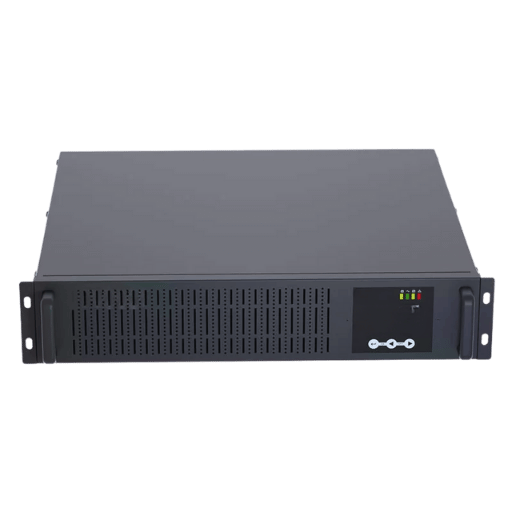
Benefits of Rack Mount UPS for Data Centers
- Space Efficiency: Rack-mount UPS systems help save space in data centers by enabling vertical stacking within server racks.
- Centralized Management: These units provide controlled power management, allowing centralized power control with other IT infrastructure sections and making maintenance easier.
- Scalability: These systems have modular designs, which make expanding them easy as the data center’s requirements increase.
- Enhanced Reliability: They provide strong power protection, with load balancing and redundant power paths, significantly lowering uptime risk.
- Improved Cooling: Placing rack-mount UPS units into the racks helps improve airflow, which enhances cooling across the system.
Space Optimization with Rack UPS Systems
Rack UPS systems are carefully curated to use space sufficiently in data centers and IT environments. They are designed to sit comfortably on standard server racks, which optimizes vertical space and reduces the extra floor area required. This design helps to retain real estate in the data center, which is critical for IT equipment while providing ease of accessibility and servicing. UPS systems are robust yet modular and provide adequate power protection while optimizing spatial layout. Hence, these systems are perfect for areas where space is limited, especially with in-row cooling and battery replacement integration.
Protecting Critical Equipment with Rack-Mounted Solutions
Rack-mounted solutions provide uninterrupted power, cooling, and adept cable management of critical equipment using in-row cooling systems. These systems protect IT infrastructure from power and thermal disruptions and physical dislocation. During outages, rack UPS systems maintain a continuous power supply. Integrated cooling mechanisms also prevent sensitive components from overheating. Furthermore, rack-mounted solutions improve workflow by ensuring equipment is aligned in an unobstructed and readily accessible position for monitoring and servicing, which streamline workflow. Collectively, these features enhance the dependability and operational lifespan of crucial equipment found in data centers and operational environments.
How do you select the best rack-mount UPS systems for your needs?
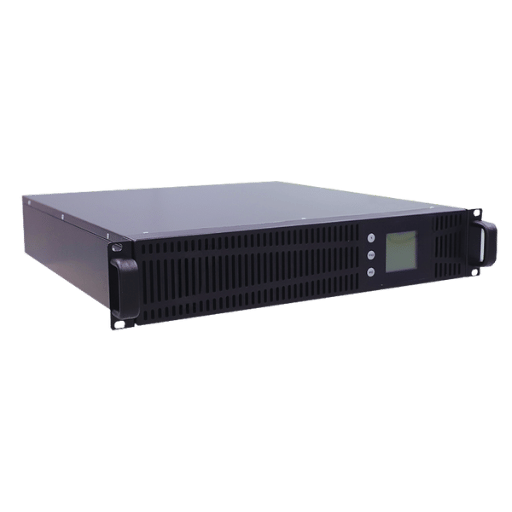
Evaluating Runtime and Battery Backup Options
The following important considerations should be made when analyzing runtime and battery backup capabilities for a rack mount UPS:
- Power Requirements: Calculate the total power consumption of connected equipment. Verify that UPS can deliver adequate power with some cushion capacity for future requirements.
- Runtime Needs: Evaluate how long the critical devices need to be functional during a power outage. Select a UPS with enough battery capacity to satisfy those requirements.
- Scalability: If longer runtimes may be required later, select systems that accommodate additional battery packs or modular expansion.
- Battery Type and Lifespan: Select UPS systems with good battery technology, such as lithium-ion and advanced lead-acid, and check their lifespan and maintenance requirements.
- Efficiency Features: Operational cost and reliability during backup performance are essential; therefore, focus on models with lower heat output during operation.
Emphasis on these criteria gives an optimal rack-mount UPS solution that best accommodates the equipment’s specific requirements, ensuring seamless operation during power outages.
Choosing Between Line-Interactive and Double Conversion Technologies
The choice between line-interactive and double-conversion UPS technologies depends on your equipment’s sensitivity and power requirements. The line-interactive UPS type is more economical and provides adequate protection for environments with minor power fluctuations. These types of UPS are perfect for small and medium-sized businesses with mostly stable power quality.
On the contrary, double conversion (or online) UPS systems provide the highest level of protection as they continuously stabilize incoming power into clean, usable energy by converting it. They serve best with mission-critical applications like data centers or medical equipment, where even the slightest power interruption can lead to significant damage or downtime.
Assess your system’s discomfort levels and use the technology that guarantees optimal reliability for your requirements.
Understanding Sine Wave and Pure Sine Wave Output
The sine wave and pure sine wave outputs pertain to the waveform produced by inverters or UPS systems. Sine wave output generates a smooth oscillation curve, approximating the utility grid power oscillation. On the contrary, pure sine wave output is more stabilized and refined than the latter. It produces clean power and is ideal for sensitive electronics like computers, medical devices, and audio-visual equipment. Pure sine wave output guarantees that no cooling devices are required to prevent overheating, malfunctioning, or other issues due to irregular power inflow. Pure sine wave output is best for applications with high precision and stability.
Installation and Maintenance Tips for Rackmount UPS
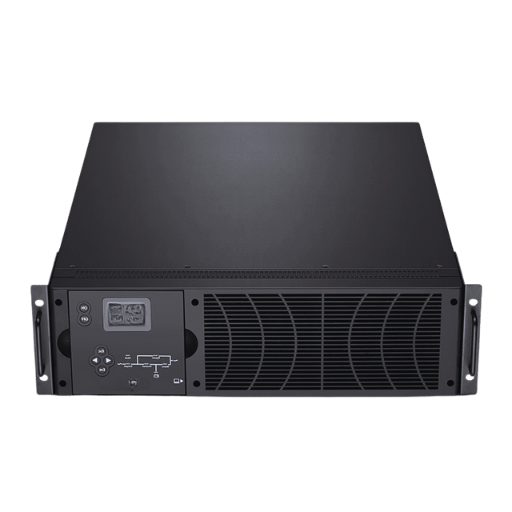
Setting Up Your Rack Mount UPS in a Server Rack
- Position the UPS Properly: Carefully select a region in the server rack, usually the lower end, for improved stability and weight distribution.
- Use Mounting Rails: For safe and secure placement, install the UPS using the mounting rails or brackets provided by the manufacturer.
- Connect to a Reliable Power Source: The UPS must be plugged into a grounded power supply that meets the device’s voltage and current rating specifications.
- Attach Devices Correctly: Each server and specialized equipment should be plugged into the UPS power outlets. Essential devices should be protected in outlets to administer backup power during an outage.
- Configure Network Management (if applicable): Monitory or remote control configuration for the UPS can be done at check on the network manage card or software level.
- Perform Initial Testing: Confirm that the device is installed, has been tested to function correctly, and provides the expected backup power.
- Document the Setup: Capture the installation details to ensure the label used can be maintained or troubleshooted against.
Regular Maintenance for Optimal Performance
- Inspect Batteries Regularly: Check the batteries for significant signs of wear, corrosion, or reduced capacity to replace them before they fail during a power outage.
- Test the UPS Periodically: UPS systems in service should be routinely checked with load testing to confirm backup power capability under working conditions.
- Clean the System: System cleaning includes removing dust and other debris from exhaust ports and components to prevent overheating and improve performance efficiency.
- Update Firmware: UPS functionality is improved by proper attention to operational issues known to be firmware-related, such as ensuring the UPS firmware is current.
- Check Connections: Power reliability is maintained when all cables and connections are confirmed tight and secure.
- Schedule Professional Service: Timely scheduled maintenance by a qualified technician ensures the system is thoroughly evaluated and any latent issues proactively addressed.
Ensuring Reliable Power Protection with Proper Setup
- Correct Sizing: Choose a UPS that meets or exceeds your equipment’s power needs so that there is enough capacity during outages.
- Strategic Placement: Keep the UPS in a ventilated space with a controlled temperature to avoid overheating and ensure it functions at peak efficiency.
- Regular Testing: Take periodic load tests to check that the UPS can power the devices during a power outage.
- Battery Care: Unsynchronized expected failures and maintained power support by altering the batteries based on the manufacturer’s requirements.
- Surge Protection: Protect surge suppressors used with UPS terminals. These safeguard the equipment from intermittent voltage-damaging surges.
Implementing these practices enhances reliability and makes the Power Protection System last longer.
Top Brands and Models of Rackmount UPS to Consider
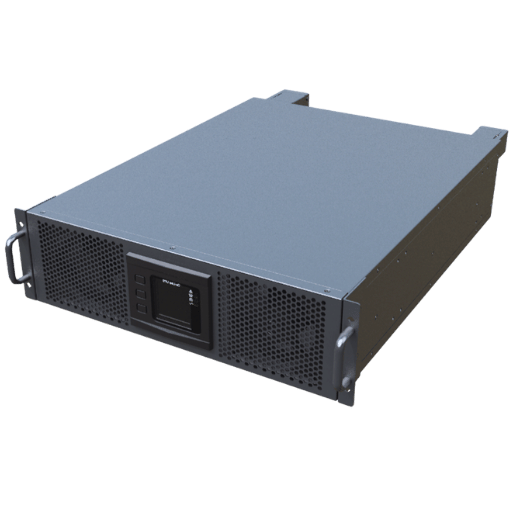
Overview of Popular Brands: APC, Eaton, and Liebert GXT5 UPS
- APC: The Smart-UPS Series provided by APC showcases innovative, easy-to-use interfaces, braided battery monitoring, and efficient power control. These features, coupled together, make for less downtime and increased productivity and efficiency.
- Eaton: The 9PX and 9SX models have become well-known for their energy efficiency, compact size, and integration of modern IT infrastructure. These models, combined, protect the transformers, ensuring long-lasting dependability and trustworthiness. The modern technologies integrated place great focus on energy efficiency and future advancements, providing trust for sustainable scalability.
- Liebert GXT5 UPS: Incorporating intuitive monitoring systems, swappable batteries, and adjustable power factor outputs, the device greatly amplifies dependability and flexibility in services for various conditions. These attributes make the Vertiv systems true performers in environments demanding a reliable source of power.
Comparing Features of 1U, 2U, and Other Variants
The primary distinction between 1U, 2U, and other variants is their size and capacity. The letter “U” represents a form of measurement for rack-mounted equipment, one of which “1U” equates to 1.75 inches in height.
- 1U Systems: These are the easiest to carry as they are the most compact designs, saving space within the racks. As portable as they are, they are designed for applications that require a handy fit, although they have a low capacity and expansion options.
- 2U Systems: Doubling the height of 1U, 2U equipment serves as a middle ground for scaling up the processing power, cooling mechanisms, and expansion features. They are a bit better than 1U, however, and still offer constricted performance.
- Larger Variants (3U and above): These are incredibly helpful for high-demand applications and are better aligned for scalable influences. They do, however, require more rack space but often pack more useful features, such as redundant systems and better cooling.
Every size-based variant serves different operational tactics in need of the system, which ultimately decides the level of advanced engineering placed within the unit.
Frequently Asked Questions (FAQs)
Q: What is a Rackmount UPS System?
A: A Rackmount UPS System, or rack mounting uninterruptible power supply, offers backup power for critical business functions while protecting devices during power outages. They are popularly used in data centers and network closets, where they can be fitted into 19-inch server racks.
Q: How do Rackmount UPS Systems ensure reliable power for critical applications?
A: A Rackmount UPS System maintains power during outages using an energy storage system, DC power, and a series of backup power solutions. It also uses line-interactive topologies, providing incredible energy and voltage control efficiency.
Q: What is the significance of power topologies in UPS systems?
A: The importance of power topologies like line-interactive power in UPS systems lies in their determination of the method used to distribute and protect power. Adequately designed power topologies help handle power disturbances and ensure critical devices receive an uninterrupted power supply.
Q: What makes Liebert GXT5 Single Phase UPS highly regarded within the industry?
A: Liebert GXT5 Single Phase UPS is a popular choice because it offers robust power systems and protection for essential equipment. Its maximum power in very compact packages enables it to fit into spaces as small as 12U of vertical rack space.
Q: What benefits does a 3000VA Rackmount UPS provide?
A: A 3000VA Rackmount UPS ensures critical systems and servers remain functional during power outages, which is crucial for business continuity. It features compact power protection that can be placed in small spaces while providing substantial energy.
Q: What is the function of UPS battery backups in Rackmount UPS Systems?
A: Rossmount UPS Systems’ backup battery power reserves an energy supply that can be used immediately during outages. This ensures that the connected devices will operate uninterrupted.
Q: Why is it important to consider the size of a Rackmount UPS?
A: Customizations with Rackmount UPS units must be adequately sized to fit within server racks or network closets, like a 19-inch server rack, and not oversized. Design Improvements where space is not wasted alongside operational functionality are highly preferable.
Q: What role does Automatic Voltage Regulation (AVR) play in Rackmount UPS Systems?
A: Automatic Voltage Regulation (AVR) controls the power under and over voltage of Rackmount UPS Systems within the electricity supply variation limits. Devices within propellant bounds can run without damage or data loss.
Q: How do Rackmount UPS Systems support servers and UPS integration?
A: Rackmount UPS Systems aid the servers and UPS amalgamation by assuring an uninterruptible power supply and protection within the server environments. They ensure the servers keep running without interruption during power system faults.
Reference Sources
1. A Cooling UPS With Natural Convection and An Ultra-Wide-Efficient Load Range
- Authors: Changqing Yin et al.
- Dates of Publication: November 8, 2024
- Conference: 2024 CPSS & IEEE International Symposium on Energy Storage and Conversion ISESC
- Summary:
- This paper reports the development of a new design of rack uninterruptable power supply (UPS) units with natural cooling, which have an efficiency of 96% at 10% load.
- The design includes several multilevel converter modules on a well-cooled base plate, which do not require forced-air cooling.
- A module with an active control load base for maximum efficiency and a minimum number of active modules at a given load range is high (AMC) for active control is proposed.
- A test bench with 10kW and 220V/50Hz was constructed and tested, evaluating the proposed design’s ability to maintain operational efficiency without climate control augmenting systems (Yin et al., 2024, pp. 56-61).
2. Design of a Universal Air Cooled Heat Dissipation System for Rack Mounted Servers
- Authors: Senlin Feng et al
- Published On: 12 July, 2024
- Conference: 2024 7th International Conference on Computer Information Science and Application Technology (CISAT)
- Summary:
- Performance cooling and overheating pose challenges for compact spaces used in high-performing rack-mounted servers, often resulting in overheating and instability.
- A universal air-cooled heat-dissipation system was constructed, in which the fans are controlled by a baseboard management controller that regulates the temperatures.
- Tested under normal and high temperatures, this system maintained stable temperatures and improved performance during critical loads(Feng et al., 2024, pp. 557–561).
3. 19-inch rack
Post Views: 4,709




